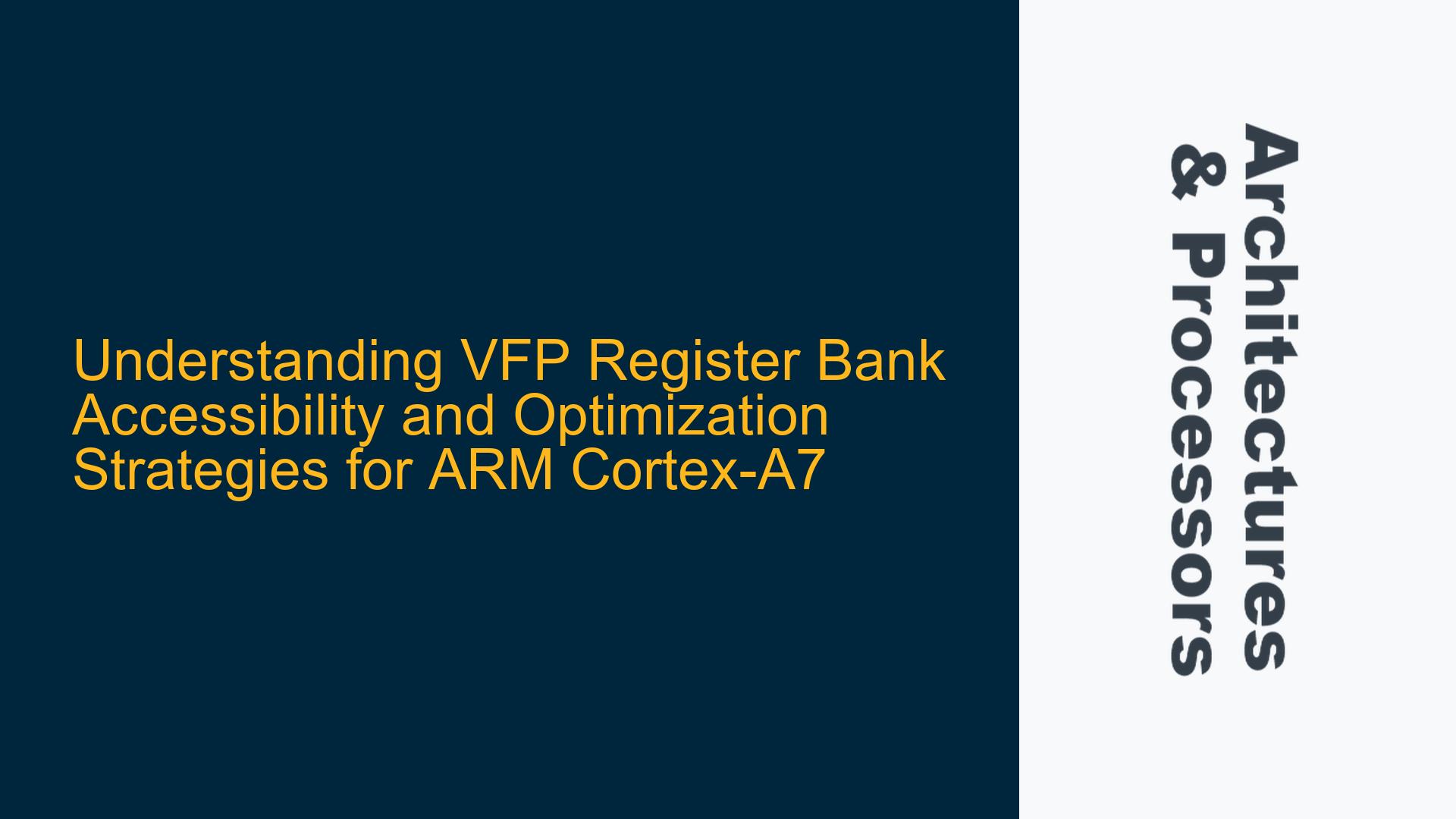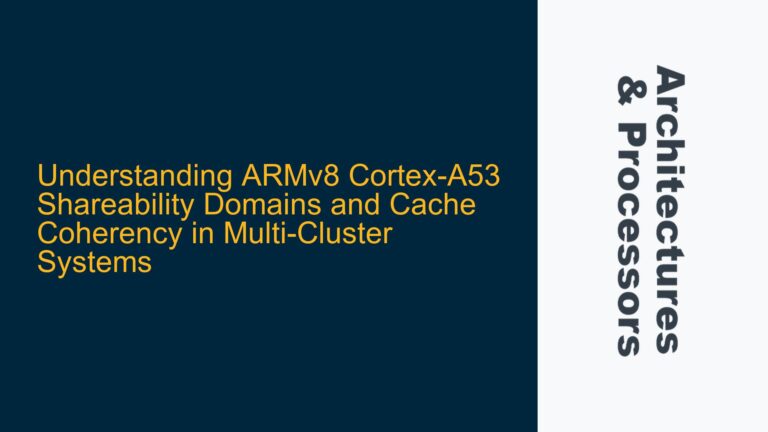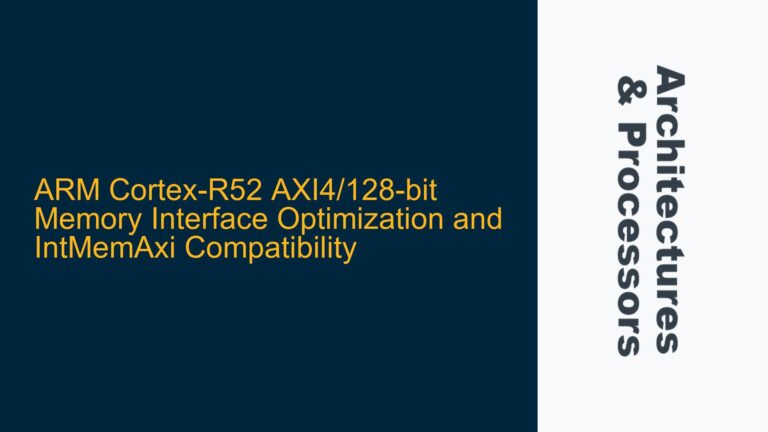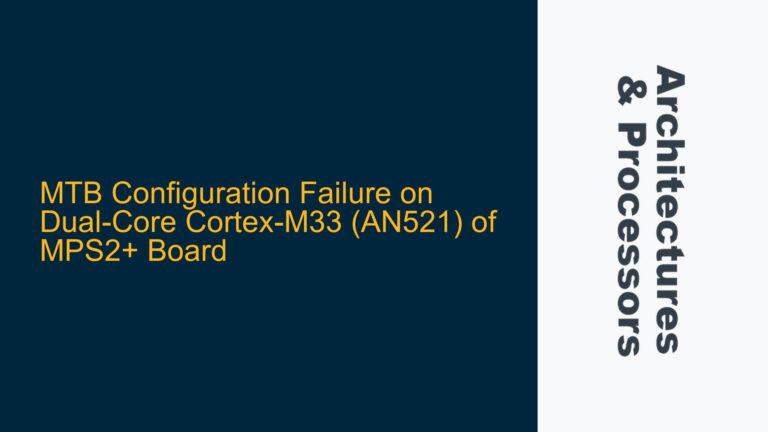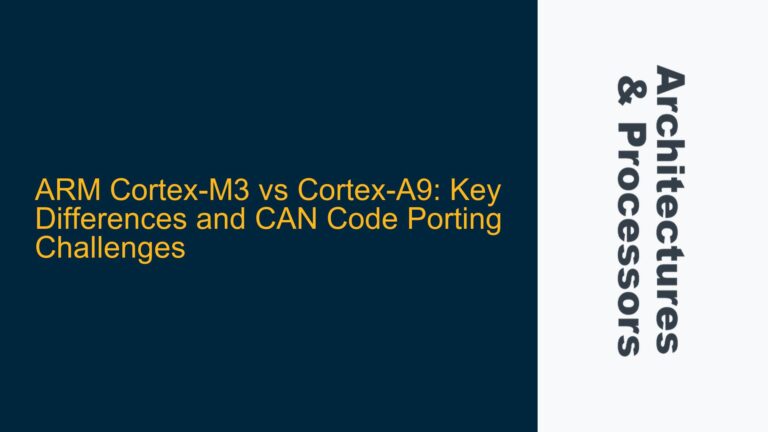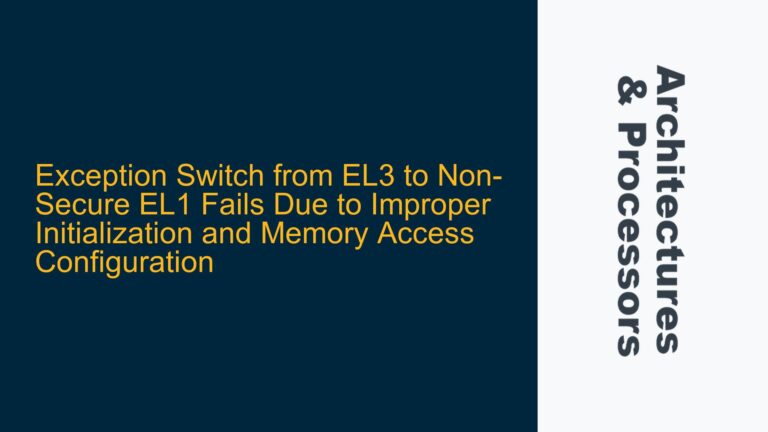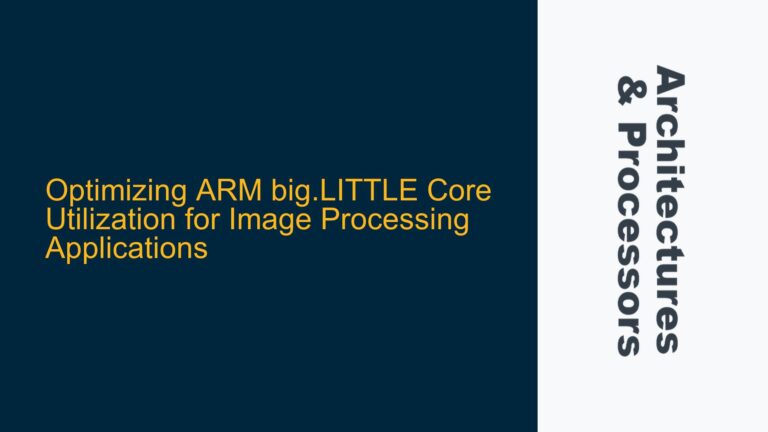VFP Register Bank Accessibility in ARM Cortex-A7: S0-S31 Limitation
The ARM Cortex-A7 processor, like many ARMv7-A architecture-based processors, incorporates a Floating-Point Unit (FPU) that supports the Vector Floating-Point (VFP) architecture. The VFP architecture provides a set of registers that can be used for floating-point operations. However, a notable limitation is that only half of the VFP register bank is accessible when viewed as thirty-two 32-bit single-word registers (S0-S31). This design choice has significant implications for software optimization, particularly in performance-critical applications such as signal processing, machine learning, and scientific computing.
The VFP register bank consists of thirty-two 64-bit doubleword registers (D0-D31). These registers can be accessed as either 64-bit double-precision floating-point registers (D0-D31) or as thirty-two 32-bit single-precision floating-point registers (S0-S31). However, when accessing the registers as 32-bit single-precision floating-point registers, only half of the register bank (S0-S31) is directly accessible. This means that the upper half of the register bank (S32-S63) is not directly accessible in the S0-S31 view.
The reason for this design is rooted in the instruction encoding limitations of the ARMv7-A architecture. ARMv7-A instructions are either 16-bit or 32-bit in length, which limits the number of bits available for encoding register numbers. Encoding 64 single-precision floating-point registers (S0-S63) would require additional bits in the instruction encoding, which would complicate the instruction set and potentially reduce the efficiency of the instruction pipeline. By limiting the accessible registers to S0-S31, the ARM architecture maintains a simpler and more efficient instruction encoding scheme.
Instruction Encoding Limitations and VFP Register Bank Design
The ARMv7-A architecture’s instruction encoding scheme is designed to balance the need for a rich set of instructions with the need for efficient instruction decoding and execution. The 16-bit and 32-bit instruction formats provide a compact encoding that allows for a large number of instructions to be represented within a limited number of bits. However, this compact encoding also imposes limitations on the number of registers that can be directly addressed in a single instruction.
In the case of the VFP register bank, the decision to limit the accessible registers to S0-S31 when viewed as 32-bit single-precision floating-point registers is a direct consequence of these encoding limitations. The ARMv7-A instruction set architecture (ISA) provides a fixed number of bits for encoding register numbers in floating-point instructions. Encoding 64 single-precision floating-point registers would require additional bits, which would either reduce the number of available bits for other instruction fields or require a more complex instruction encoding scheme.
The VFP architecture supports two configurations of the register bank: VFPv3-D16/VFPv4-D16 and VFPv3-D32/VFPv4-D32. In the VFPv3-D16 and VFPv4-D16 configurations, only 16 double-precision floating-point registers (D0-D15) are available, which corresponds to 32 single-precision floating-point registers (S0-S31). In the VFPv3-D32 and VFPv4-D32 configurations, all 32 double-precision floating-point registers (D0-D31) are available, which corresponds to 64 single-precision floating-point registers (S0-S63). However, even in the VFPv3-D32 and VFPv4-D32 configurations, only the lower half of the register bank (S0-S31) is directly accessible in the S0-S31 view.
This design choice reflects a trade-off between the complexity of the instruction encoding and the flexibility of the register bank. By limiting the accessible registers to S0-S31, the ARM architecture simplifies the instruction encoding and ensures that the instruction pipeline can efficiently decode and execute floating-point instructions. However, this design also imposes limitations on the number of registers that can be used in single-precision floating-point operations, which can impact the performance of certain algorithms.
Optimizing Floating-Point Performance on ARM Cortex-A7
To optimize floating-point performance on the ARM Cortex-A7 processor, it is important to understand the limitations of the VFP register bank and to develop strategies for working within these limitations. One common optimization technique is loop unrolling, which involves replicating the body of a loop multiple times to reduce the overhead of loop control instructions and to increase the utilization of the available registers.
In the context of the ARM Cortex-A7 processor, loop unrolling can be particularly effective for algorithms that involve floating-point operations, such as the l2-distance calculation described in the original post. By unrolling the loop, the compiler can generate code that makes more efficient use of the available registers, reducing the need for register spilling and improving overall performance.
However, the effectiveness of loop unrolling is limited by the number of available registers. In the case of the ARM Cortex-A7 processor, the VFP register bank provides 32 single-precision floating-point registers (S0-S31) when viewed in the S0-S31 view. This means that the compiler can only use these 32 registers for single-precision floating-point operations, which can limit the degree of loop unrolling that can be achieved without causing register spilling.
To maximize the performance of floating-point algorithms on the ARM Cortex-A7 processor, it is important to carefully balance the degree of loop unrolling with the number of available registers. In some cases, it may be necessary to reduce the degree of loop unrolling to avoid register spilling and to ensure that the algorithm can be executed efficiently within the constraints of the VFP register bank.
In addition to loop unrolling, other optimization techniques can be used to improve the performance of floating-point algorithms on the ARM Cortex-A7 processor. These techniques include:
-
Use of NEON SIMD Instructions: The ARM Cortex-A7 processor supports the NEON SIMD (Single Instruction, Multiple Data) instruction set, which provides a set of instructions for performing parallel operations on multiple data elements. By using NEON SIMD instructions, it is possible to perform multiple floating-point operations in parallel, which can significantly improve the performance of algorithms that involve large amounts of floating-point data.
-
Data Alignment and Memory Access Patterns: The performance of floating-point algorithms can also be improved by optimizing data alignment and memory access patterns. By ensuring that data is aligned to cache line boundaries and by minimizing the number of cache misses, it is possible to reduce the latency of memory accesses and to improve the overall performance of the algorithm.
-
Compiler Optimizations: Modern compilers provide a range of optimization options that can be used to improve the performance of floating-point algorithms. These options include automatic loop unrolling, instruction scheduling, and register allocation. By enabling these optimization options, it is possible to generate code that is more efficient and that makes better use of the available hardware resources.
In conclusion, the design of the VFP register bank in the ARM Cortex-A7 processor reflects a trade-off between the complexity of the instruction encoding and the flexibility of the register bank. By limiting the accessible registers to S0-S31 in the S0-S31 view, the ARM architecture simplifies the instruction encoding and ensures efficient instruction decoding and execution. However, this design also imposes limitations on the number of registers that can be used in single-precision floating-point operations, which can impact the performance of certain algorithms.
To optimize floating-point performance on the ARM Cortex-A7 processor, it is important to understand these limitations and to develop strategies for working within them. Techniques such as loop unrolling, use of NEON SIMD instructions, optimization of data alignment and memory access patterns, and compiler optimizations can all be used to improve the performance of floating-point algorithms and to make the most of the available hardware resources. By carefully balancing these techniques with the constraints of the VFP register bank, it is possible to achieve significant performance improvements in a wide range of applications.
